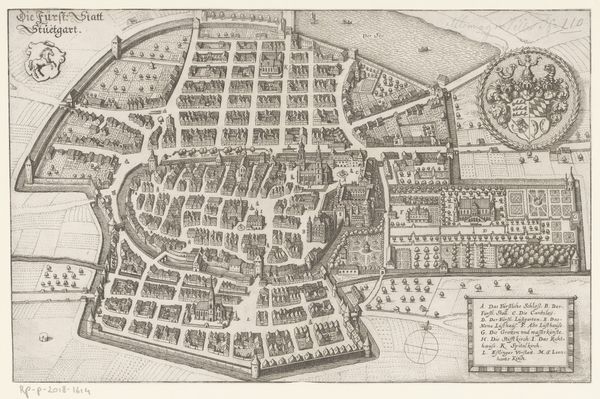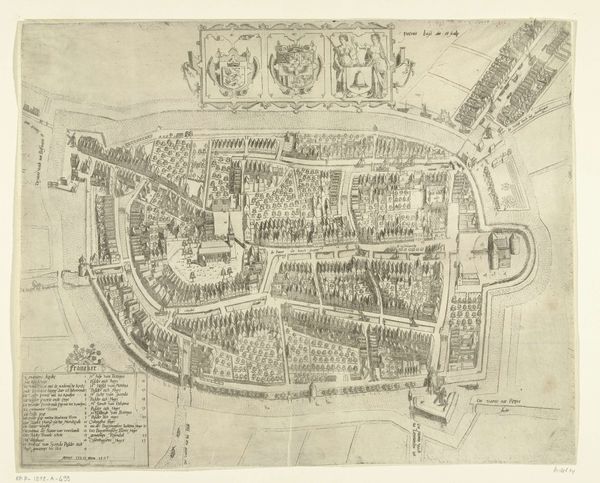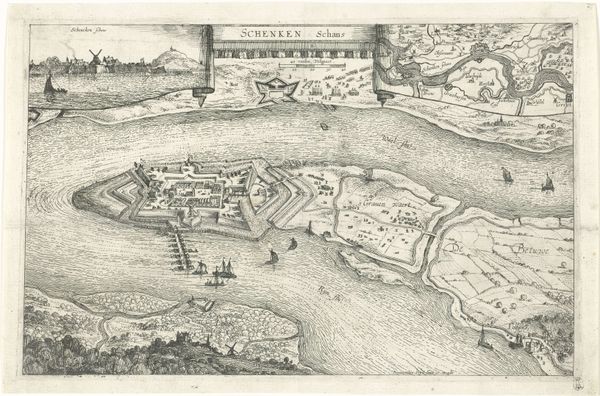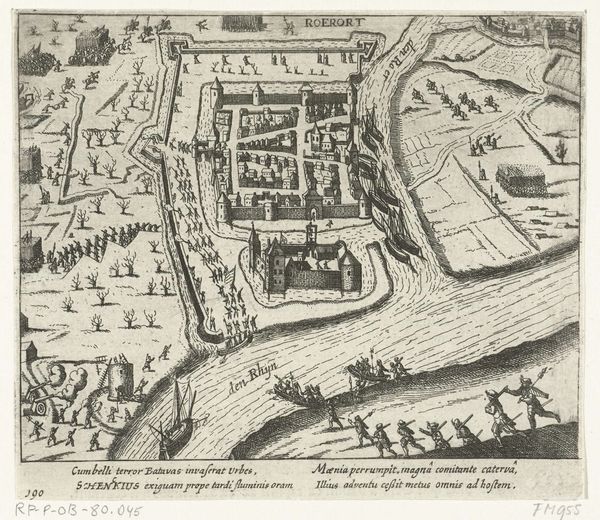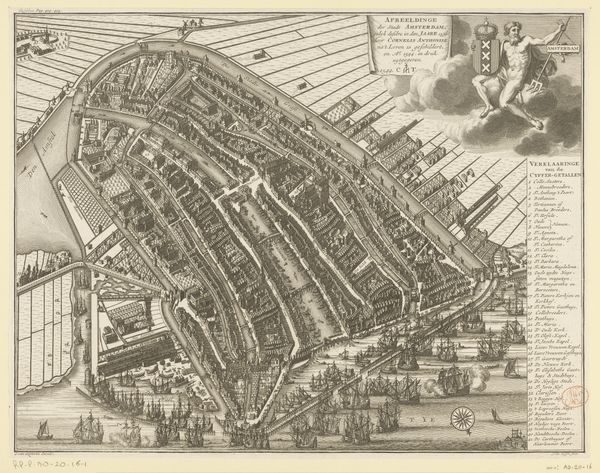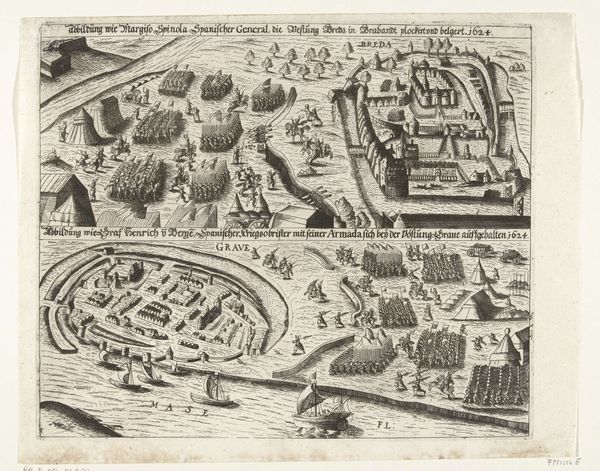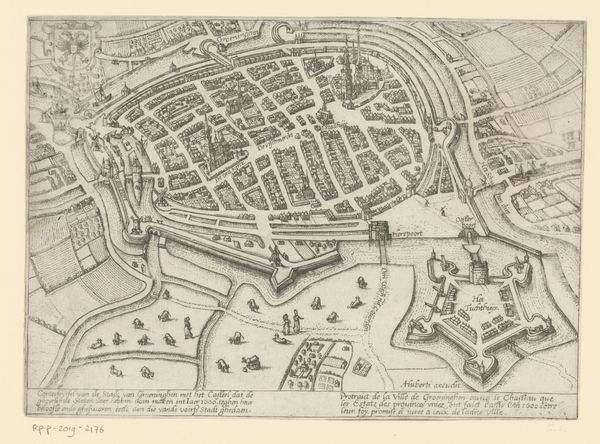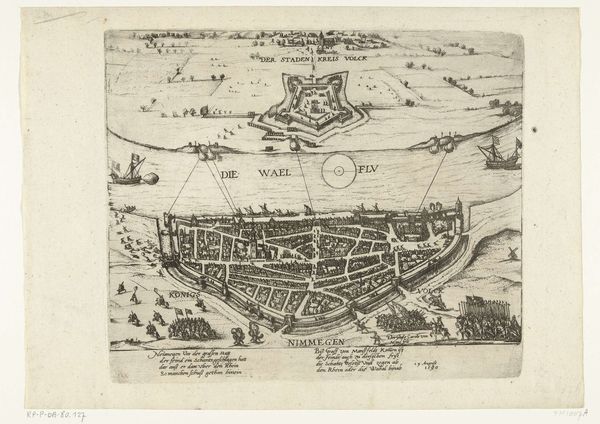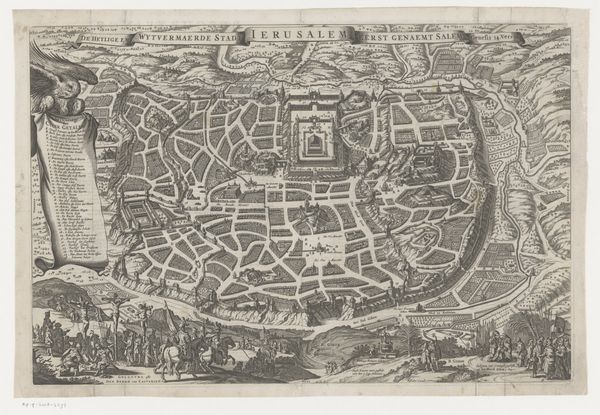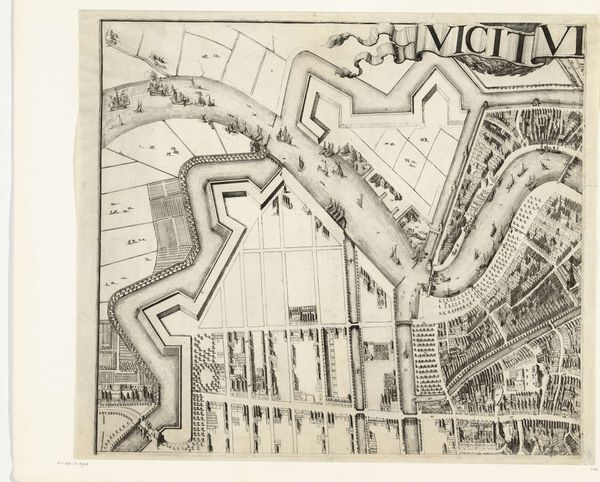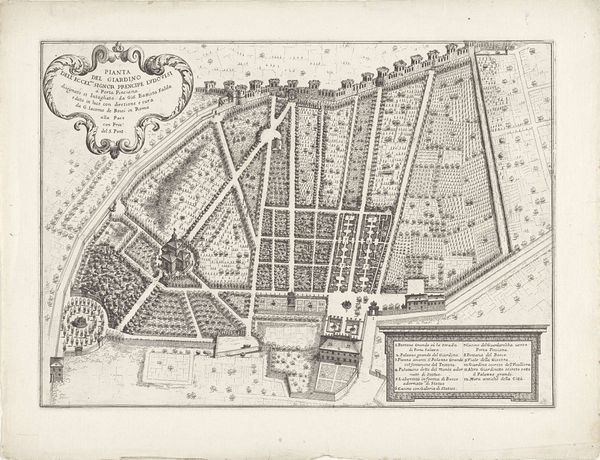
drawing, print, ink, pen, engraving
#
drawing
#
pen drawing
#
dutch-golden-age
# print
#
pen illustration
#
pen sketch
#
landscape
#
ink
#
pen-ink sketch
#
pen
#
cityscape
#
engraving
Dimensions: height 296 mm, width 439 mm
Copyright: Rijks Museum: Open Domain
Curator: Before us, we have Paulus van Wtewael’s "Plattegrond van Kampen," a cityscape rendering created with pen and ink, dating back to 1598. Editor: It has a very orderly and precise look to it, yet something about the density feels overwhelming. Curator: Order is key here. Observe the calculated strokes of the pen; each line serves a function in delineating urban space. The consistent hatching conveys a sense of texture but also a rigidly defined system. The symbolic framework, indeed, renders Kampen legible as a unified entity, more an idea than a place. Editor: I’m drawn to the handcraft, the evident time invested in meticulously building this image, line by line. Think about the labor involved in creating such detailed maps. It was functional artistry that directed civic development and projected power. Those neat rows of houses and careful positioning of fortifications surely represent wealth creation and distribution as well as anxieties surrounding war. Curator: True, and in its execution, the high degree of linear accuracy implies that the map, in a way, attempts to anticipate every potential perspective. You find in the composition not just a static document, but the conceptual foundations of an expanding worldview during the Golden Age. Every street seems intentionally rendered, the river currents observed in detail. Editor: Right, but it isn’t just the finished product that’s valuable here. It's equally fascinating to think about how the availability of ink, paper, and specialized tools shaped Wtewael’s ability to even create such a work. The engraver's technique becomes inseparable from the expansionist ambitions that this city plan visually represents. This material act connects to the development, infrastructure, and aspirations of Kampen, tying its social conditions to the production and dissemination of visual knowledge. Curator: A crucial consideration. And, from a more self-contained perspective, notice how Wtewael manages to weave textual and visual information seamlessly. Note, the inclusion of a descriptive text is framed decoratively in the upper-left. That’s no small accomplishment, merging utility with artistry. Editor: Yes, reflecting the integration of practical city planning with aesthetic expression characteristic of its historical context, one where artistic craftsmanship significantly impacted urban material development. Considering these intricate connections broadens our view into the materiality of making history.
Comments
No comments
Be the first to comment and join the conversation on the ultimate creative platform.

